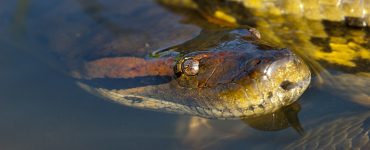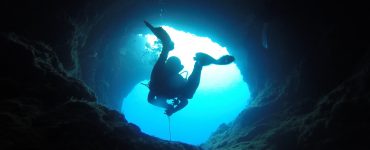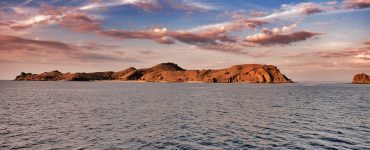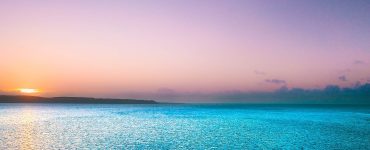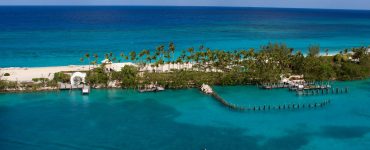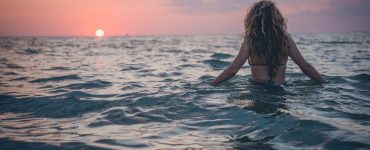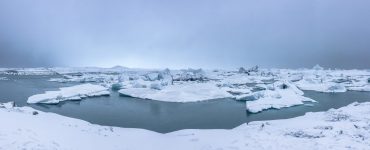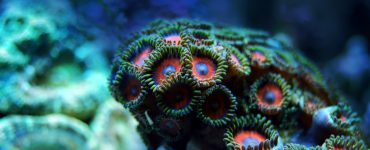Dutch Springs is a limestone quarry located in Bethlehem, Pennsylvania and was once a functioning cement plant in 1935. When the mining started, the aquifer began to flood the land, and the crew built a pump house to pump the water out.
The plant was operational until it closed in the 1970s. In 1980, Stu Schooley bought the land and turned Dutch Springs into the current 50-acre freshwater scuba diving playground that it is today.
The water is filtered by zebra mussels, making the water reach 30-40 foot visibility or even greater on some days. If you get really close to the mussels you can witness them retract into their shells. If you are sneaky, you can catch a glimpse of them sucking in the particles.
The visibility is also dependent on the algal blooms. I know last year, divers were complaining about really bad visibility.
In the three years I spent diving there, I only remember bad visibility a handful of times. This is a great place to practice buoyancy. If you touch the bottom, it silts out quickly!
Dutch Springs is great for training and for fun! When the ocean has rough seas and your dives are canceled, Dutch Springs is there!
It is a great place for getting in the water, and while it might not be that really cool wreck that sunk in the ocean, the wrecks at Dutch Springs will hone your skills and are full of their own history. Besides the wrecks, there are platforms located at about 25-30 feet, great for practicing skills.
There are walls that are full of interesting features including plant life and fish. The deepest part of the lake can reach 100 feet and deeper in some spots, but this depends on the lake water level.
Dutch Springs has acquired many things to place in the underwater park. Most pieces have interesting stories.
There are even videos floating around (pun intended) of them sinking some of the items.
Can you imagine the size of the lift bags and numbers of divers required to sink just one wreck? Below are some of the stories. You can also read more about them on the Dutch Springs website.
Challenger 600 plane
The newest attraction at Dutch Springs. The Challenger 600 was acquired from Dumont Aviation in Delaware in 2013. The tail and wings had to be taken apart for transport to Pennsylvania. What a sight that would have been!
Imagine driving on the New Jersey Turnpike and you see an airplane being hauled. Dutch Springs staff spent many months welding the plane back together and stripping the inside so there would be a decreased risk to divers of getting caught on or cut by something.
I watched their progress from when the plane arrived to when it was almost ready to be placed in the water. The plane was finally sunk in 2016 and is one of the most popular attractions. This plane has a 45’ wingspan and is 65’ long.
It is suspended in mid-water starting at 25 feet and reaching 40 feet deep. Divers can swim inside the plane and even take over the controls! The swim inside is an overhead environment so advanced divers only! Newer divers can still enjoy the outside of the wreck.
Sikorsky H-37 helicopter
The helicopter was sunk in 1995. It used to be suspended in mid-water in the middle of the quarry, but it was moved to the mouth of the cul-de-sac so that the Challenger plane could take its place. You can find the helicopter suspended at 25 feet with the bottom reaching 53 feet. Depths suitable for your open water divers! You can swim through the helicopter as well.
Army 6 x 6 truck
The army 6 x 6 truck is a 2 ½ ton, 6 wheel military cargo truck. Just beyond the trolley car and into a little ditch, you will find the 6 x 6 sitting in 80-90 feet of water. It is an excellent place to do some deep diver skills.
School bus
The school bus is located in just about 60 feet of water. You can do a free descent on it or follow the ropes from one of the platforms. A free descent is the most fun because you can do a skydiver pose and go straight through one of the openings on the top of the bus and practice getting close to the bottom, but not hitting it.
Visibility could become a little reduced if you disturb the inside of the bus. You also might startle a few of the resident fish so keep an eye out. The school bus also has a Sandy Hook memorial plaque on it, honoring those that lost their lives in the 2012 shooting.
Cessna
The top of the Cessna sits at 15-20 feet of water and reaches near 30 feet at the bottom. You can usually see the Cessna from the surface which makes it a great spot for snorkelers. It is also located on the island located in the middle of the quarry.
The Cessna has lines attached to it, one of which is connected to the surface with a buoy, making navigation and descents on it very easy. My favorite way to approach the Cessna is from just below when swimming around the island. You see the rope, follow it up a few feet and there it stands! The tail of the Cessna! Such a beautiful sight!
Trolley car
The trolley car was an old Philadelphia presidential trolley car. It is considered an advanced dive because it sits beyond 70 feet deep and is an overhead environment. I took my wreck diver course at Dutch Springs and got to run line inside of the wreck. That was so awesome!
The Silver Comet
This is a really cool boat located right off the peninsula in less than 60 feet of water. You can swim through it. It is a little cold at this boat, but a nice, easy dive.
The firetruck
The firetruck is found in shallow water off of the student side. It is usually above the first thermocline, making it ideal for beginner divers.
The tanker
The tanker lays in about 65 feet of water and has lines that attach from other attractions. It is sealed so you cannot enter it and get stuck!
The Helldiver
A short navigation from the school bus you will find the Helldiver. It is usually quite chilly, and the visibility can be bad at times. However, this is a wreck that should be ventured to. There are no lines so navigation skills are a must!
The old pump house
The pump house that was used to pump the water out so that the cement plant workers could mine the land is still standing, just underwater. It is back in the cul-de-sac areas and is a great place for photography.
There are many more wrecks and other fun items to see!
Getting into the water
Entry and exit into the water is made easy with railings that lead to platforms that you can finish gearing up on. You can also just easily walk in on the shoreline or do a deep water entry from the dock. There is also a nice confined open water space to do some skills before going into open water.
Marine life
The fish of Dutch Springs are also worth mentioning. They are very friendly or very territorial, depending on your perspective.
There are giant fish that you can sometimes spot swimming around the lake. Most of the fish you see are largemouth bass, rainbow trout, koi, carp, palomino trout, crayfish, perch, catfish, zebra mussels, and others. Each wreck usually has a resident fish so keep a look out!
What else is there to do?
Dutch Springs is not just for scuba divers. The sport of freediving has taken off, and Dutch Springs offers a great location where freedivers can explore deep wrecks and practice their skills.
While diving there, don’t be startled when you see someone swimming with you down at 50 feet without their scuba gear!
Besides all the wonderful diving activities, there are fun activities for everyone including an aqua park and ropes course.
Are you from out of town? There are numerous hotels in the area, but you can also camp out right on the Dutch Springs property.
The best part about diving at Dutch Springs is spending the entire weekend there, socializing with old friends and new, exchanging dive stories, then going to sleep in your tent, waking up, and rolling into your dive gear and back into the water! Literally, dive, eat, sleep, repeat! There are bathroom and showers, a snack shop, a gift shop, and an air and enriched air nitrox fill station with tank rentals.
When to go diving
Dutch Springs is open for diving April through November with a couple of instructor weekends in the winter as well as their annual New Year’s Eve dive. Check their website for operating hours and admission fees. The summer and early fall are my favorite times to dive there.
There are two thermoclines most of the year, but in the early spring and late fall usually there is just one or maybe none!
A thermocline (also known as the thermal layer or the metalimnion in lakes) is a thin but distinct layer in a large body of water in which temperature changes more rapidly with depth than it does in the layers above or below. In the ocean, the thermocline divides the upper mixed layer from the calm deep water below.
Depending largely on season, latitude, and turbulent mixing by wind, thermoclines may be a semi-permanent feature of the body of water in which they occur, or they may form temporarily in response to phenomena such as the radiative heating/cooling of surface water during the day/night. Factors that affect the depth and thickness of a thermocline include seasonal weather variations, latitude, and local environmental conditions, such as tides and currents.
In summer, the surface can be near 80° F, but the first thermocline can occur around 30 feet deep and quickly get into the 60° degree F range. Deeper depths you can find yourself in 30-40° degree F water, even in the summer! I never dove there in anything less than a 7mm wetsuit. We dove in dry suits numerous times as well.
The lake can freeze over in the winter, but not thick enough yet for ice diving. Night dives are allowed on Saturday nights as well.
For your safety, there are staff members located at various lookout points around the lake to support in case of emergencies.
When you go, look for my good ole buddies from Hamden Scuba. You can usually find them most weekends camping out on the peninsula side.
Header image credits: Blue Planet Scuba




